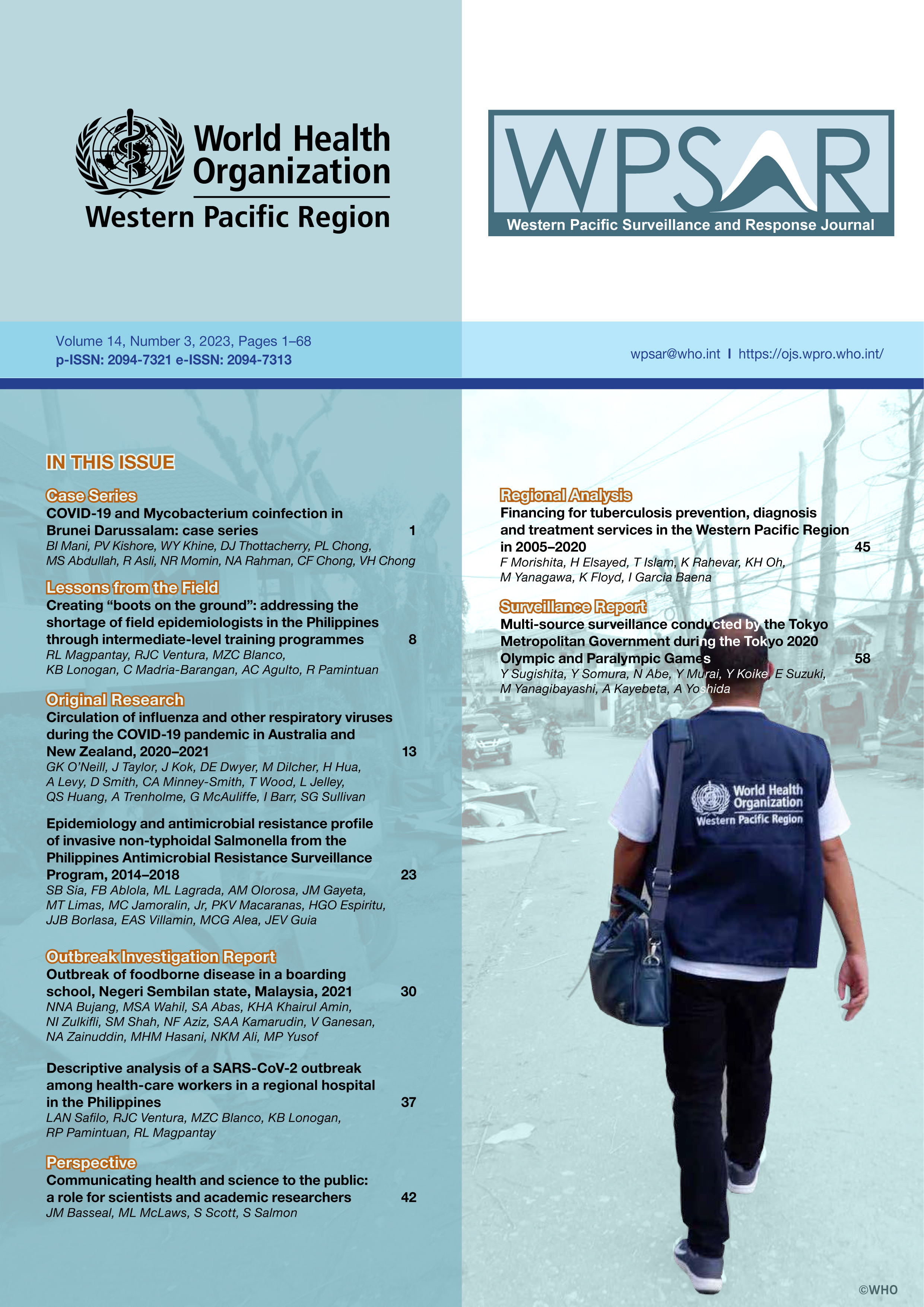Circulation of influenza and other respiratory viruses during the COVID-19 pandemic in Australia and New Zealand, 2020–2021
DOI:
https://doi.org/10.5365/wpsar.2023.14.3.948Keywords:
influenza, respiratory syncytial viruses, respiratory infections, travel restrictions, health-related, physical distancing, Australia, New ZealandAbstract
Objective: Circulation patterns of influenza and other respiratory viruses have been globally disrupted since the emergence of coronavirus disease (COVID-19) and the introduction of public health and social measures (PHSMs) aimed at reducing severe acute respiratory syndrome coronavirus 2 (SARS-CoV-2) transmission.
Methods: We reviewed respiratory virus laboratory data, Google mobility data and PHSMs in five geographically diverse regions in Australia and New Zealand. We also described respiratory virus activity from January 2017 to August 2021.
Results: We observed a change in the prevalence of circulating respiratory viruses following the emergence of SARS-CoV-2 in early 2020. Influenza activity levels were very low in all regions, lower than those recorded in 2017–2019, with less than 1% of laboratory samples testing positive for influenza virus. In contrast, rates of human rhinovirus infection were increased. Respiratory syncytial virus (RSV) activity was delayed; however, once it returned, most regions experienced activity levels well above those seen in 2017–2019. The timing of the resurgence in the circulation of both rhinovirus and RSV differed within and between the two countries.
Discussion: The findings of this study suggest that as domestic and international borders are opened up and other COVID-19 PHSMs are lifted, clinicians and public health professionals should be prepared for resurgences in influenza and other respiratory viruses. Recent patterns in RSV activity suggest that these resurgences in non-COVID-19 viruses have the potential to occur out of season and with increased impact.

